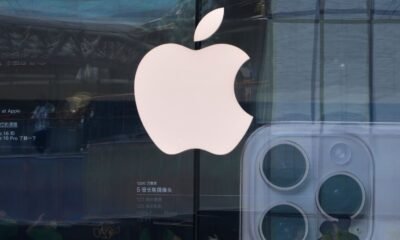Tools & Platforms
Midjourney | AI Technology, Tools, Versions, & History

Table of Contents
Table of Contents
Top Questions
Who founded the Midjourney lab and when?
Who founded the Midjourney lab and when?
How does the Midjourney tool generate images?
How does the Midjourney tool generate images?
What was a major update in Midjourney’s capabilities in 2023?
What was a major update in Midjourney’s capabilities in 2023?
What improvements were made in Midjourney version 7?
What improvements were made in Midjourney version 7?
Midjourney, generative artificial intelligence (AI) tool that creates images from user-generated text prompts. It can produce images in a photorealistic, painterly, cinematic, or surrealistic style.
History
Midjourney, Inc., was founded in San Francisco in August 2021 by entrepreneur David Holz, who had previously founded the sensor company Leap Motion (which was bought and rebranded by the British company Ultrahaptics in 2019). Holz, with a team of 10 engineers, set up an independent lab to develop the Midjourney app. In February 2022 the lab launched its Discord server to the public. Discord, a social media platform, allows users to chat in online communities. The Midjourney Discord server, which had about 20 million registered users by the end of 2024, was part of Holz’s vision for a highly collaborative AI tool. Although users initially had to have a Discord account to use the app, Midjourney, Inc., launched an independent website for the app in 2024.
Deep learning process
The Midjourney tool runs on closed-source software created with custom algorithms. The technology generates images by employing a large language model (LLM) and a diffusion model that together run algorithms on training data consisting of massive libraries of images paired with text descriptions. Midjourney’s model was trained with data from the Internet and from an open-source dataset provided by the German nonprofit LAION.
Midjourney’s Original Limits
Although the Midjourney model is a sophisticated image generator, Midjourney, Inc., originally decided that the model would not stray from the lab’s vision of generating artistic images. Founder David Holz, in a 2022 interview with the tech news website The Verge, spoke of the Midjourney model’s limitations: “We have a default style and look, and it’s artistic and beautiful, and it’s hard to push [the model] away from that, meaning you can’t really force it to make a deepfake right now.” However, the software went through an algorithm update in mid-2023 that made it easier for users to create more-convincing deepfakes.
Midjourney uses an LLM to interpret text prompts by breaking them down into their key concepts. It then converts the concepts into a latent vector, which is a numeric code with image details, such as color palette, shape, and style. Midjourney then uses a diffusion model for the final stages of the process. Such models are named for their resemblance to the concept of diffusion in physics, a process in which random molecular movement causes a net flow of matter from a region of high concentration to a region of low concentration. Diffusion models, however, are trained to apply diffusion in reverse. They add “noise,” or random values (which appear as static in an image), to make an original dataset unrecognizable; they must then “reverse” the noise in order to re-obtain the data in the form of a high-quality image.
Versions and improvements
Since February 2022 Midjourney, Inc., has released several versions of its AI tool that generated abstract and painterly images with low cohesion (indicating a lack of consistency across images). Later versions of the tool introduced upscaling and variation buttons to give users more control over the images generated. Other updates included further image customization, enhanced by knowledge of life-forms, places, and objects. In later releases, images were also improved for quality and realism. This led to controversy, especially after an image of Pope Francis wearing a puffer coat went viral on the Internet. Although Midjourney, Inc., banned the word pope following the incident, users may still create deepfakes of other public figures.
A significant advancement came in December 2023 with the release of version 6. This was the first version to allow for the integration of text directly within images. Released in April 2025, version 7 introduced a draft mode that produces prototype images at 10 times the speed and half the cost of standard mode images.
Tools & Platforms
Global Tech Organization to Hold AI Summit at UND

(TNS) — The largest technical organization in the world has made the University of North Dakota the location for a summit focused on artificial intelligence and autonomous technology.
Innovation, Workforce and Research Conference summits — like the one coming to Grand Forks — are meant to shine a light on the locations they’re held at and what professionals are doing in those areas, said Melissa Carl, director of business development and career and member services at IEEE-USA.
“It’s a way for us to help put that spotlight on some really cool innovation that’s going on that maybe not the rest of the country would know about,” she said.
IEEE-USA, an organizational unit under the global IEEE (founded under the name Institute of Electrical and Electronics Engineers), is a technical professional organization for a number of technical professions, including engineers, scientists, computer scientists, software engineers, aeronautics engineers and others. The organization is holding the IWRC AI and Autonomy Summit at UND on Wednesday, Sept. 10, to bring together stakeholders, academia and government leaders to forge conversations about innovation in technology and science. The event will particularly put a spotlight on the region’s AI, aerospace and autonomous systems. It will be held in the Memorial Union from 8 a.m. to 4 p.m.
The IWRC events are held in small, localized and rural areas, said Leah Laird, senior marketing and communications specialist at IEEE-USA. The summits focus on driving innovation and workforce sectors of the area and bringing together lead stakeholders from academia and the government.
“(It gets) conversations and really important discourse going, so that hopefully that can have an impact on the local area when it comes to the U.S.’s stance and innovation, when it comes to technology and science,” she said.
The event coincides with North Dakota Autonomy Week, proclaimed by Gov. Kelly Armstrong. The summit and other events across the state were mentioned in the proclamation, which named North Dakota as a national leader in autonomous systems development and deployment. The proclamation also named UND as a cutting-edge research institution working alongside other industry leaders and public-private partnerships to responsibly develop AI, robotics and autonomy.
“Autonomy Week celebrates the innovators, educators, entrepreneurs, farms and public servants working to ensure that intelligent and autonomous systems benefit all communities across our state,” the proclamation said.
Being a leader in AI is one of the big goals for UND this year. During his yearly State of the University address, President Andrew Armacost said the university aims to become the AI university for North Dakota this academic year.
In past comments, Armacost said UND as a campus is focusing on growth in AI and unification around it. The university is navigating how to prepare students in every discipline to be successful in an AI-enabled world, both in their academic disciplines and their careers.
“It’s not the blind adoption of new tools,” he said. “It’s the critical inquiry about what the societal impacts are on AI, what the governance pieces and the legal pieces and frameworks are that we need to understand.”
Armacost will have a fireside chat with Program Manager Phillip Smith from the Tactical Technology Office of the Defense Advanced Research Projects Agency at the summit during a networking lunch. Smith is one of the number of guests to the event, including IEEE-USA members, UND faculty and staff, business leaders and others in the region visiting through the day’s events. Mayor Brandon Bochenski will also be delivering remarks during the summit.
IEEE-USA will also be holding a conference in October at UND. Carl said it will be more of a traditional IEEE technical conference.
The summit’s full agenda and registration is available at https://iwrc.ieeeusa.org/iwrc-grand-forks/.
© 2025 the Grand Forks Herald (Grand Forks, N.D.). Distributed by Tribune Content Agency, LLC.
Tools & Platforms
The U.S. economy actually grew by nearly a million fewer jobs than previously thought, and ‘AI is automating away tech jobs,’ economist says

The U.S. economy created nearly one million fewer jobs over the past year than previously thought, according to newly revised data from the Bureau of Labor Statistics, and the biggest percentage losses came from industries tied to technology—an area that is under scrutiny from economists assessing the impact of artificial intelligence.
The BLS’s Preliminary Benchmark Revision cut total employment between March 2024 and March 2025 by 991,000 jobs, a 0.6% downward adjustment. That marks one of the sharpest annual recalibrations in recent history. Prior to Friday’s release, economists had expected a revision closer to 682,000. The BLS noted that benchmark revisions are usually within a plus-minus of 0.2%.
After the update, the data paint a much weaker picture of hiring momentum. Job growth in 2024 now averages just 106,000 per month, down from the originally reported 168,000. For 2025 so far, the pace has slowed to only 44,000 jobs per month.
“The revision shows the economy entered 2025 with less momentum than previously understood,” said Bill Adams, chief economist at Comerica Bank in Dallas, in a statement to Fortune. The preliminary benchmark revision was worse than expected, the Comerica statement added. Accounting for it, job growth has been weak for most of this year.
AI’s fingerprints on tech layoffs
The biggest hit came in the information industry, a category that includes internet companies, software publishing, and broadcasting. Employment here was revised down by 67,000, or 2.3%. Between March 2024 and March 2025, information sector jobs were revised down by 88,000, a 3% decline—and they’ve continued falling into this summer. Adams noted that “The revised data show more clearly that AI is automating away tech jobs.”
Other sectors also saw notable downward revisions:
- Leisure and hospitality: down 176,000 jobs (1.1%)
- Wholesale trade: down 110,000 jobs (1.8%)
- Professional and business services (including temp agencies): down 158,000 jobs (0.7%)
Still, it was the retrenchment in tech and information services that stood out to Adams, raising new concerns about how quickly advances in AI are reshaping the job market. A sweeping study by Stanford University economists published in August found an outsized impact on entry-level tech roles exposed to automation by AI, with a 13% decline since 2022. Yet struggles with AI adoption have given some business leaders pause, with “human skills” emerging as a sorely needed complement to AI adoption.
The bottom line for Jeffrey Roach, chief economist for LPL Financial, was similar to Adams’ takeaway: “The labor market appears weaker than originally reported.” Solid household wealth is keeping the middle and upper-income consumer afloat, he added, but the economy is in the midst of “an atypical business cycle.”
For this story, Fortune used generative AI to help with an initial draft. An editor verified the accuracy of the information before publishing.
Tools & Platforms
Apple’s new iPhone 17 devices don’t have an AI-powered Siri yet. It doesn’t matter.

At yet another splashy event, Apple on Tuesday introduced its latest lineup of iPhones: the iPhone 17, 17 Pro, 17 Pro Max, and a new slimmer version dubbed the iPhone Air. The “Air” branding is meant to bring to mind other lightweight — and sometimes less expensive — Apple products like the MacBook Air and iPad Air. But it also recalls a time when smartphone makers were chasing an ever-thinner phone. In the AI era, however, it’s not necessarily the device’s size that matters; it’s what the software it runs can do.
On this front, Apple has lagged its competitors.
At its iPhone 17 event, the company only referenced AI technology a few times: to rehash some updates announced in June at WWDC, like Visual Intelligence and its on-device models, and in some aspects of its camera upgrades, like the iPhone 17’s front camera, which it calls Center Stage.
The most compelling use of AI wasn’t even introduced as a phone upgrade; it was the AI-powered Live Translation feature coming to Apple’s AirPods 3.
There was no mention of Siri at all, AI-powered or otherwise.
Much has been made about how Apple’s miscalculation on AI could negatively affect its industry standing and future success. Meanwhile, Google last month rolled out its latest release of an AI-powered Android phone with its Pixel 10, as iPhone owners still await an AI Siri that’s been delayed until 2026.
Until now, Apple has only released what could be considered baseline AI features for its devices, like AI writing tools, summarization, generative AI images (which some complain are not very good), live translation, visual search, and Genmoji, among others. Yet a digital assistant that understands a wide range of questions — without deferring to ChatGPT — or one that can provide further context from your iPhone apps remains overdue.
Recently, it was reported that Apple is looking to third parties to help it catch up in the AI race. An AI-enhanced Siri could be running some other technology — like Google Gemini — under the hood.
At first glance, this delay, combined with the decision to rely on a third party — or even, possibly a sizable acquisition — seems like it could spell bad news for Apple. However, Apple’s decision to outsource some of the phone’s AI technology could actually become a selling point for consumers.
Today’s iPhone owners often swap out Apple’s technology for Google’s by opting for Gmail, Google Drive and Docs, Google Maps, and Chrome over Apple’s own apps like Mail, its iWork suite, Apple Maps, and Safari, for example. When people search the web, they turn to Google’s Search app, not Apple’s built-in Spotlight search, despite its many integrations over the years to offer basic facts and answers, leveraging sources like Wikipedia. Why, then, shouldn’t they be able to use Google’s AI technology, too?
If Apple does proceed with a third-party deal to integrate AI into its devices, it may work out to be an even bigger win for iPhone owners. It would mean that high-performing AI technology would be integrated into the device more natively. It would feel more seamless, more a part of the iPhone experience itself than simply running an AI app. And Apple could get there without having to invest as heavily in the infrastructure required to compete in the AI race, which is good for the company’s (already healthy) bottom line.
Plus, given the speed with which AI technology has been evolving, this design would leave room for Apple to swap out models or expand support to include others, as AI companies edge themselves ahead of others.
The result for consumers would be the best of both worlds: the aesthetics and hardware quality (thinness and all!) of the iPhone, with Google’s technology (or Anthropic’s or OpenAI’s) powering some of the key AI components. That could also be beneficial to Apple’s overall brand.
It also means that the look-and-feel of updated iPhones themselves and their hardware advances will continue to drive sales and upgrades, allowing Apple to do what it does best: focus on build quality, camera improvements, privacy-preserving tech, intentional software design changes like Liquid Glass — and yes, super thin phones.
Apple could continue to market itself as a best-in-class hardware maker first, not an AI device maker; customers could still long for the latest iPhones, as always, without having to sacrifice the latest technology advances when they make the choice to buy a phone from Apple.
Of course, this scenario only plays out if and when Apple opts to launch a version of Siri that runs a third-party’s AI technology to enhance its own. (Or if it buys an AI company). But if Apple decides to only rely on its Apple Intelligence offerings without getting them up to speed quickly, the outcome could be much different.
-

 Business2 weeks ago
Business2 weeks agoThe Guardian view on Trump and the Fed: independence is no substitute for accountability | Editorial
-
Tools & Platforms4 weeks ago
Building Trust in Military AI Starts with Opening the Black Box – War on the Rocks
-

 Ethics & Policy1 month ago
Ethics & Policy1 month agoSDAIA Supports Saudi Arabia’s Leadership in Shaping Global AI Ethics, Policy, and Research – وكالة الأنباء السعودية
-

 Events & Conferences4 months ago
Events & Conferences4 months agoJourney to 1000 models: Scaling Instagram’s recommendation system
-

 Jobs & Careers2 months ago
Jobs & Careers2 months agoMumbai-based Perplexity Alternative Has 60k+ Users Without Funding
-

 Education2 months ago
Education2 months agoMacron says UK and France have duty to tackle illegal migration ‘with humanity, solidarity and firmness’ – UK politics live | Politics
-

 Education2 months ago
Education2 months agoVEX Robotics launches AI-powered classroom robotics system
-

 Podcasts & Talks2 months ago
Podcasts & Talks2 months agoHappy 4th of July! 🎆 Made with Veo 3 in Gemini
-

 Funding & Business2 months ago
Funding & Business2 months agoKayak and Expedia race to build AI travel agents that turn social posts into itineraries
-

 Podcasts & Talks2 months ago
Podcasts & Talks2 months agoOpenAI 🤝 @teamganassi



















